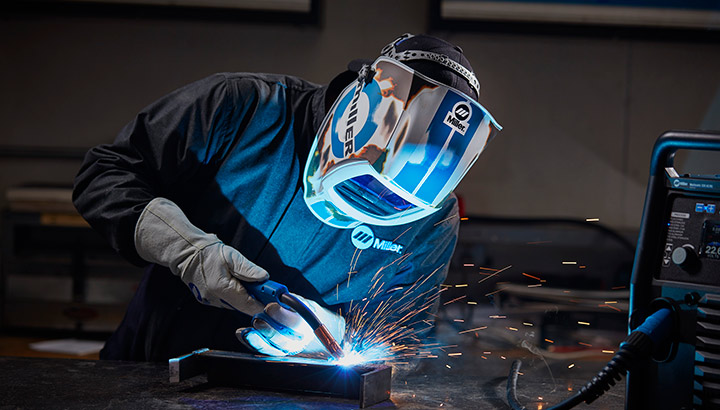Understanding Welding WPS: Comprehensive Guide for Welders
Understanding Welding WPS: Comprehensive Guide for Welders
Blog Article
Achieving Welding Quality: Revealing the Secrets of WPS Application and Optimization
In the world of welding, accomplishing excellence is a search that rests on the thorough execution and optimization of Welding Procedure Specifications (WPS) These foundational papers function as the foundation of welding procedures, determining the parameters and treatments essential for producing high-grade welds continually. Nevertheless, the tricks to unlocking the complete capacity of WPS exist not only in understanding its value but also in understanding the ins and outs of its application and optimization. By delving right into the crucial elements, techniques, obstacles, and finest techniques connected with WPS, a world of welding excellence awaits those that are prepared to explore its depths.
Importance of WPS in Welding
The Importance of Welding Procedure Specifications (WPS) in the welding sector can not be overstated, acting as the backbone for guaranteeing uniformity, top quality, and security in welding operations. A WPS supplies detailed guidelines on exactly how welding is to be accomplished, consisting of important variables such as materials, welding processes, joint design, filler metals, interpass and preheat temperature levels, welding currents, voltages, traveling speeds, and extra. By adhering to a distinct WPS, welders can preserve uniformity in their work, resulting in regular weld high quality throughout various projects.

Trick Aspects of WPS
Reviewing the essential elements of a welding treatment specification (WPS) is essential for understanding its duty in welding procedures. A thorough WPS includes a number of crucial elements that direct welders in achieving quality and consistency in their work. One essential element of a WPS is the welding process spec, which details the particular welding processes to be utilized, such as gas tungsten arc welding (GTAW) or protected steel arc welding (SMAW) Furthermore, the WPS consists of information on the welding products, such as the type and specs of the base metal and filler steel to be utilized. The WPS also specifies essential variables like welding criteria, preheat and interpass temperature needs, and post-weld warm therapy procedures. Additionally, it includes details on joint layout, fit-up, and any type of unique techniques or safety measures necessary for the welding procedure. By integrating these key elements into the WPS, welding treatments can be standardized, making sure top quality, efficiency, and safety and security in welding procedures.
Techniques for WPS Optimization

Secondly, training and qualification of welding employees according to the details requirements of the WPS is vital. Offering detailed training programs and making certain that welders are accredited to implement procedures laid out in the WPS can result in better welds and lowered rework.
Furthermore, leveraging innovation such as welding software and surveillance systems can help in optimizing WPS. These devices can assist in tracking variables, guaranteeing parameters are within specified restrictions, and providing real-time feedback to welders, enabling them to make prompt modifications for enhanced weld high quality.
Usual Obstacles and Solutions
Facing obstacles my response in implementing the strategies for WPS optimization can prevent welding operations' effectiveness and high quality. One typical challenge is insufficient training or understanding of the welding treatment specifications (WPS) among the welding team. This can lead to inappropriate implementation of welds, causing flaws and rework. To address this, thorough training programs ought to be carried out to guarantee that all welders are proficient in analyzing and using WPS properly.
An additional challenge is the lack of correct documentation and record-keeping, which is crucial for WPS optimization. Without clear records of welding criteria, products used, and evaluation outcomes, it comes to be difficult to identify locations for renovation and ensure consistency in welding procedures. Implementing a robust documents system, such as electronic welding monitoring software, can assist enhance record-keeping and promote information analysis for continual improvement.
Furthermore, inconsistent welding tools calibration and maintenance can posture a considerable difficulty to WPS optimization. Regular devices checks, calibration, and upkeep schedules should be adhered to strictly to guarantee that welding criteria are accurately article controlled and kept within the defined resistances (welding WPS). By addressing these common difficulties with positive options, welding procedures can enhance efficiency, top quality, and total welding excellence
Ideal Practices for WPS Application
To make certain effective WPS application in welding operations, adherence to industry standards and careful interest to detail are vital. When launching WPS application, it is important to start by completely comprehending the particular welding needs of the project. This entails a detailed evaluation of the welding procedure requirements, materials to be welded, and the environmental conditions in which the welding will certainly occur.
As soon as the requirements are clear, the next action is to pick the ideal welding procedure that lines up with these requirements. This includes speaking with the pertinent codes and standards, such as those supplied by the American Welding Culture (AWS) or the International Company for Standardization (ISO), to ensure compliance and high quality.
Moreover, recording the whole WPS execution procedure is essential for traceability and quality assurance. Comprehensive documents should be kept concerning welding parameters, material preparation, preheat and interpass temperatures, welding consumables utilized, and any type of discrepancies from the original procedure. Regular audits and reviews of the WPS can help identify locations for renovation and make certain recurring optimization of the welding procedure.


Final Thought
Finally, the execution and optimization of Welding Treatment Specifications (WPS) is critical for accomplishing welding excellence. By comprehending the essential components of WPS, executing reliable techniques for optimization, addressing typical challenges, and complying with best methods, welders can ensure top notch welds and safe working problems. It is important for specialists in the welding industry to focus on the proper application of WPS to boost overall welding efficiency and achieve preferred end results.
The Importance of Welding Treatment Requirements (WPS) in the welding industry can not be overemphasized, serving as the backbone for making certain consistency, high quality, and safety and security in welding procedures. A WPS gives comprehensive directions on just how welding is to be carried out, including crucial variables such as materials, welding processes, joint style, filler steels, interpass and preheat temperatures, welding currents, voltages, travel rates, and a lot more. One crucial aspect of a WPS is the welding process spec, which details the details find more information welding processes to be used, such as gas tungsten arc welding (GTAW) or protected steel arc welding (SMAW) By integrating these vital components right into the WPS, welding treatments can be standard, making certain high quality, efficiency, and safety and security in welding operations.
It is crucial for specialists in the welding sector to prioritize the correct implementation of WPS to enhance general welding performance and achieve desired outcomes.
Report this page